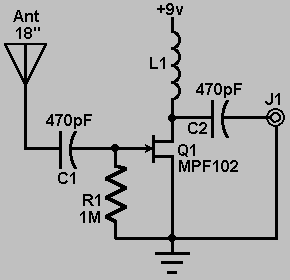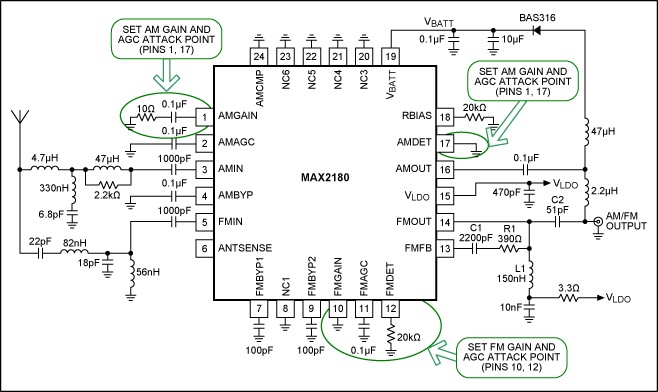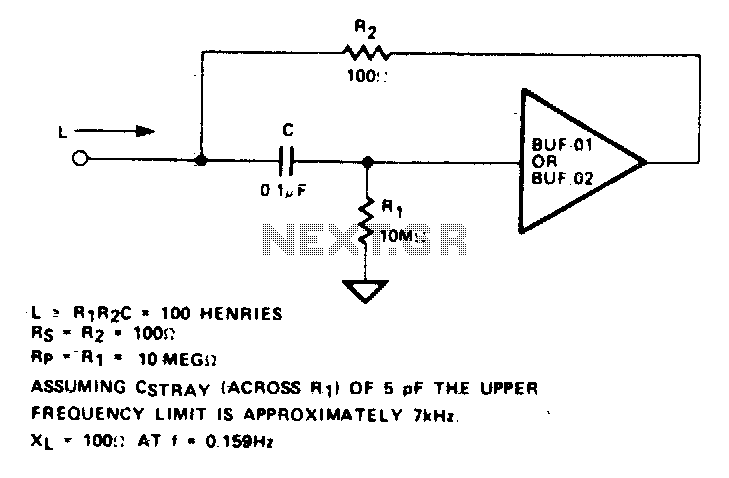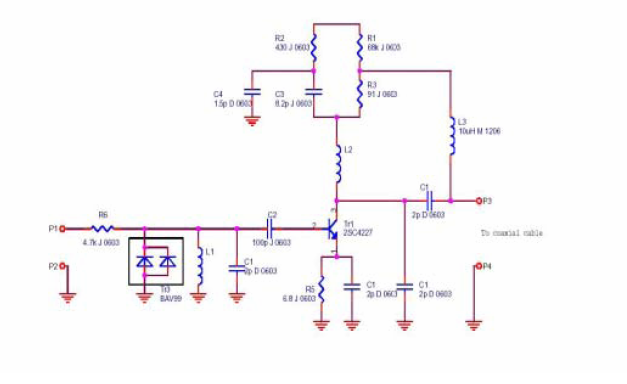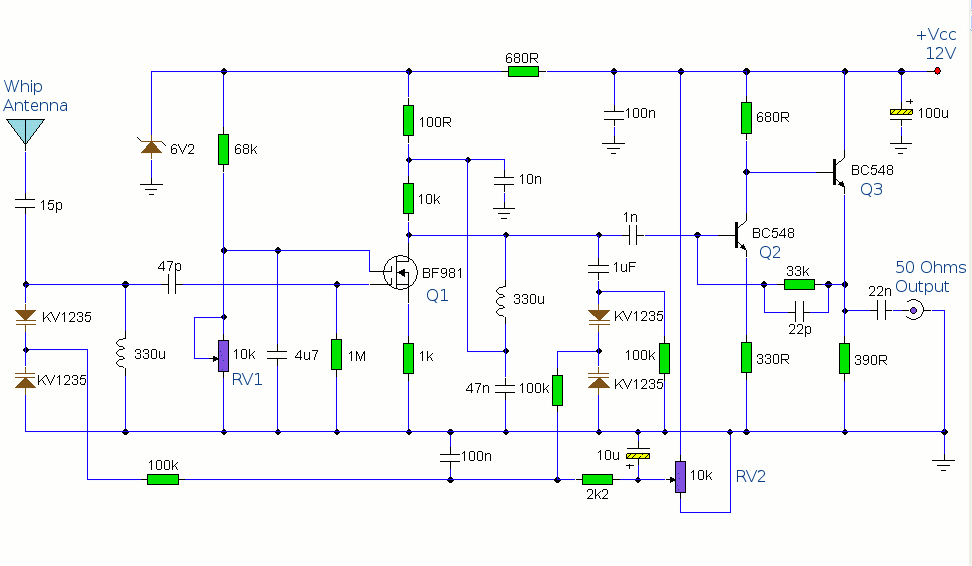
Active bandpass filter
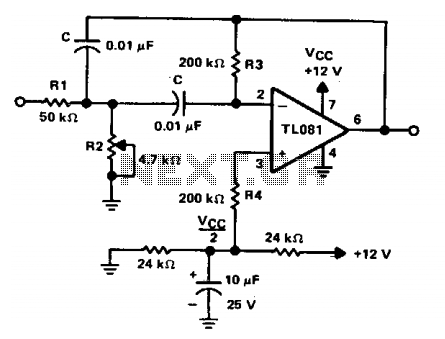
The circuit is a two-pole active filter utilizing a TL081 operational amplifier. This type of circuit is applicable only for quality factors (Qs) less than 10. The component values for this filter are determined using specific equations.
The two-pole active filter designed with the TL081 op-amp is characterized by its ability to provide a controlled frequency response with a defined roll-off rate, typically at 12 dB per octave. The TL081 is a low-noise JFET-input operational amplifier, making it suitable for audio and precision applications.
To establish the filter's characteristics, the following equations are employed to calculate the necessary component values:
1. **Cutoff Frequency (fc)**: The cutoff frequency is determined by the resistor (R) and capacitor (C) values in the circuit. The standard formula is:
\[
f_c = \frac{1}{2\pi R C}
\]
This equation allows for the selection of R and C to achieve the desired cutoff frequency.
2. **Quality Factor (Q)**: The quality factor of the filter, which influences the filter's bandwidth and peaking, is calculated using:
\[
Q = \frac{f_c}{\Delta f}
\]
where \(\Delta f\) is the bandwidth of the filter. For optimal performance within the specified limit of Q < 10, careful selection of R and C values is critical to ensure stability and desired frequency response.
3. **Feedback and Gain Configuration**: The TL081 can be configured in various feedback arrangements to set the gain of the filter. The gain (A) can be determined using:
\[
A = 1 + \frac{R_f}{R_1}
\]
where \(R_f\) is the feedback resistor and \(R_1\) is the input resistor. Adjusting these resistances will alter the gain while maintaining the filter characteristics.
4. **Component Selection**: It is essential to choose resistors and capacitors with appropriate tolerances to ensure the filter operates within the specified parameters. Tolerance affects the accuracy of the cutoff frequency and the quality factor.
In summary, the two-pole active filter utilizing the TL081 op-amp is a versatile circuit that can be tailored for various applications by adjusting component values according to the established equations. Careful design considerations will ensure that the filter operates effectively within the specified range of quality factors, providing reliable performance in signal processing tasks.The circuit is a two-pole active filter using a TL081 op amp. This type of circuit is usable only for Qs less than 10. The component values for this filter are calculated from the following equations.
The two-pole active filter designed with the TL081 op-amp is characterized by its ability to provide a controlled frequency response with a defined roll-off rate, typically at 12 dB per octave. The TL081 is a low-noise JFET-input operational amplifier, making it suitable for audio and precision applications.
To establish the filter's characteristics, the following equations are employed to calculate the necessary component values:
1. **Cutoff Frequency (fc)**: The cutoff frequency is determined by the resistor (R) and capacitor (C) values in the circuit. The standard formula is:
\[
f_c = \frac{1}{2\pi R C}
\]
This equation allows for the selection of R and C to achieve the desired cutoff frequency.
2. **Quality Factor (Q)**: The quality factor of the filter, which influences the filter's bandwidth and peaking, is calculated using:
\[
Q = \frac{f_c}{\Delta f}
\]
where \(\Delta f\) is the bandwidth of the filter. For optimal performance within the specified limit of Q < 10, careful selection of R and C values is critical to ensure stability and desired frequency response.
3. **Feedback and Gain Configuration**: The TL081 can be configured in various feedback arrangements to set the gain of the filter. The gain (A) can be determined using:
\[
A = 1 + \frac{R_f}{R_1}
\]
where \(R_f\) is the feedback resistor and \(R_1\) is the input resistor. Adjusting these resistances will alter the gain while maintaining the filter characteristics.
4. **Component Selection**: It is essential to choose resistors and capacitors with appropriate tolerances to ensure the filter operates within the specified parameters. Tolerance affects the accuracy of the cutoff frequency and the quality factor.
In summary, the two-pole active filter utilizing the TL081 op-amp is a versatile circuit that can be tailored for various applications by adjusting component values according to the established equations. Careful design considerations will ensure that the filter operates effectively within the specified range of quality factors, providing reliable performance in signal processing tasks.The circuit is a two-pole active filter using a TL081 op amp. This type of circuit is usable only for Qs less than 10. The component values for this filter are calculated from the following equations.
